
Bluebonnets, paintbrushes, buttercups, and a vast bouquet of other wildflowers spread across the Texas Hill Country each spring, splashing the fields with eye-catching colors.
Thanks to Lady Bird Johnson’s Highway Beautification Act of 1965, wildflower seeds were planted along roadways across the United States and especially throughout her home in the Hill Country.
“Where flowers bloom, so does hope,” said Lady Bird, a nature lover at heart.
According to the Lyndon B. Johnson Presidential Library, as the bill waded through the U.S. Congress for passing, President Johnson said of his first lady: “Now, she wants that bill. And if she wants it, I want it, and by God, we’re going to pass it.”
This spring, sort out the world of wildflowers using our handy identification guide below!
BLUEBONNET

Everyone knows this one! Bluebonnets are easy to identify because, well, they’re blue. They’re also the dominant wildflower that you’ll see in the spring. The city of Burnet has an entire festival dedicated to bluebonnets each April!
Fun fact: The Bluebonnet was named the state flower of Texas in 1901, and contrary to popular belief, it is not illegal to pick them.
TEXAS PAINTBRUSH

Texas, or Indian, paintbrushes are a bright red-orange and stand tall among the rest of area’s wildflowers. They also come in cream, yellow, and purple, but you’ll mostly see the red-orange variety in the Hill Country.
Fun fact: According to Native American legend, a young boy was painting the sunset but lacked red paint. He asked the Great Spirit for help, and the next day, he was granted red paintbrushes. After the boy finished his painting, he scattered the red paintbrushes across the land, and from then on, Indian paintbrush flowers began to bloom. The illustrated children’s book “The Legend of the Indian Paintbrush” by Tomie dePaola tells the tale.
INDIAN BLANKET
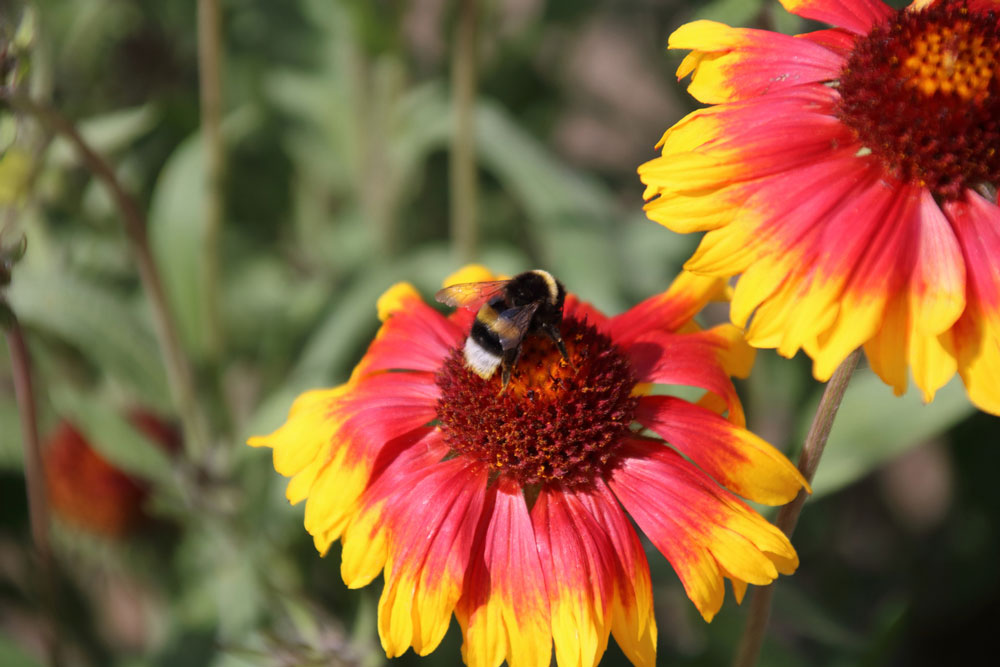
Very different from the Texas paintbrush, the Indian blanket has long, thin, red petals with tips a halo of yellow. When they cover an entire field, it looks like a brightly woven blanket has been laid over the grass—hence, the name.
Fun fact: Indian blankets are also called firewheels. They are the state flower of Oklahoma.
PURPLE CONEFLOWER

The purple coneflower has hot pink petals that droop downwards with a bright orange-brown center.
Fun fact: Echinacea, the family to which the purple coneflower belongs, is used in holistic medicine for treating the common cold. Cough drops containing echinacea can work wonders for a sore throat.
GIANT SPIDERWORT

These proliferous purple wildflowers are all over the Hill Country. The giant spiderwort grows in bunches, each flower boasting three deep-purple petals.
Fun fact: While quite uncommon, the giant spiderwort also blooms with white petals—a rare find if you do come across one!
DRUMMOND’S PHLOX

Drummond’s phlox has five petals and come in a variety of colors. It is a common wildflower with a long blooming period. This Texas native can be found in shades of white, pink, lilac, red, and purple.
Fun fact: Drummond’s phlox is named for Scottish botanist Thomas Drummond, who collected plants on an expedition to Texas from 1833 to 1835 and sent the collection to Britain.
LARGE BUTTERCUP

These cute, yellow flowers, which grow low to the ground, are quite fragrant and pleasant.
Fun fact: If you hold a buttercup to your chin and the bud reflects a yellow hue onto it, it is proof you have a soft spot for butter. At least, that’s how it goes in the schoolyard buttercup game.
PRAIRIE VERBENA
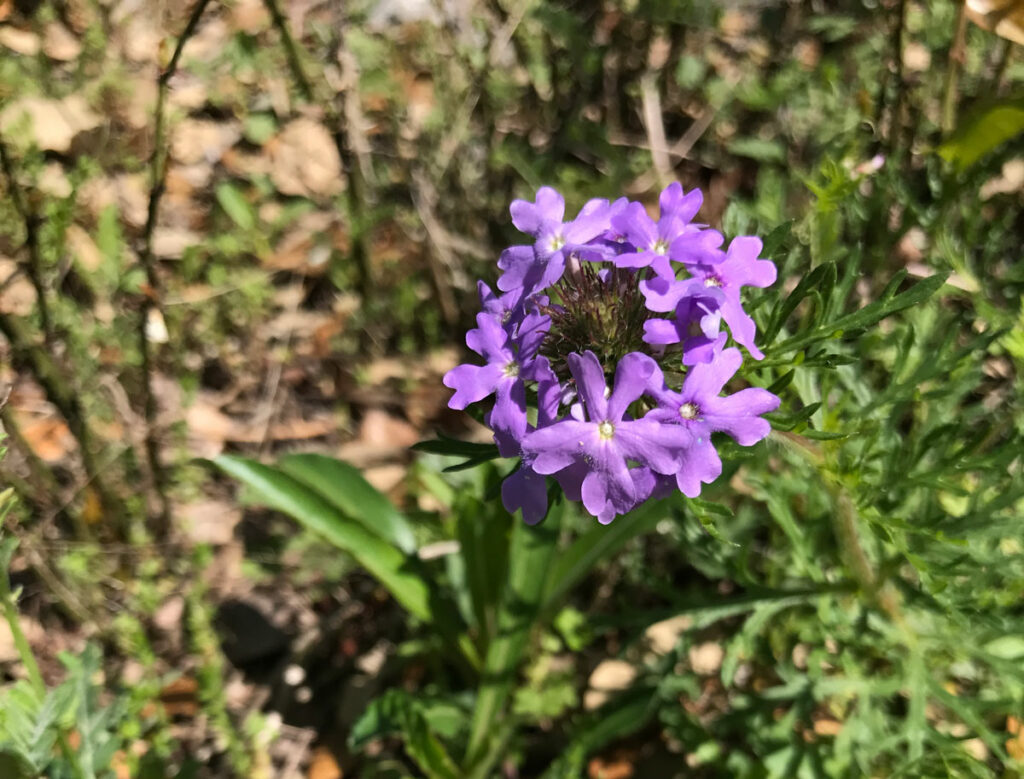
These gentle clusters of pleasant, purple flowers are widespread across the state of Texas. The Spanish name—Moradilla—translates to “little purple one” in homage to the tiny, purple petals.
Fun fact: There are more than 3,000 species of verbena plants. Verbena leaves are commonly used in herbal teas for extra flavor.
FOUR-NERVE DAISY
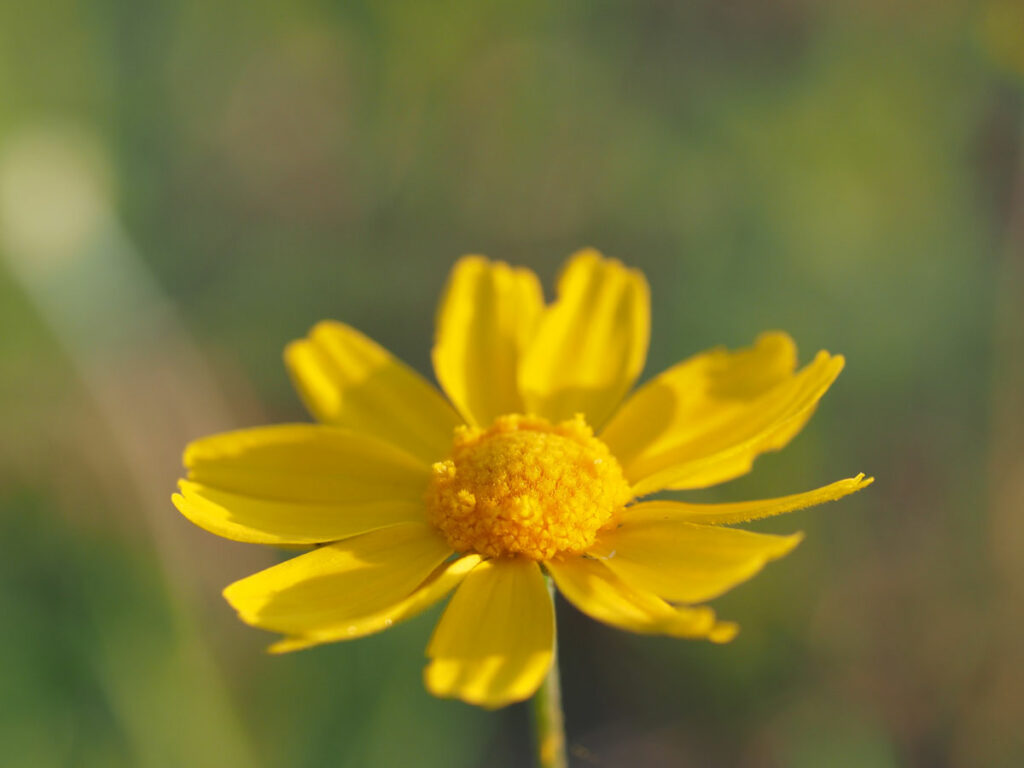
Also know as the Perky Sue, these pretty, yellow flowers are loosely related to sunflowers. You can spot these small and sweet wildflowers from spring to fall.
Fun fact: The four-nerve daisy is a sight for sore eyes, literally: Native American tribes used these flowers to cure aching eyes.
ANTELOPE HORN

These white and green wildflowers are a species of milkweed, which is a necessary food source for monarch butterfly caterpillars.
Fun fact: While this milkweed tastes delicious to monarchs, there are toxic chemicals in the flowers that make monarchs poisonous to predators.
WINECUP
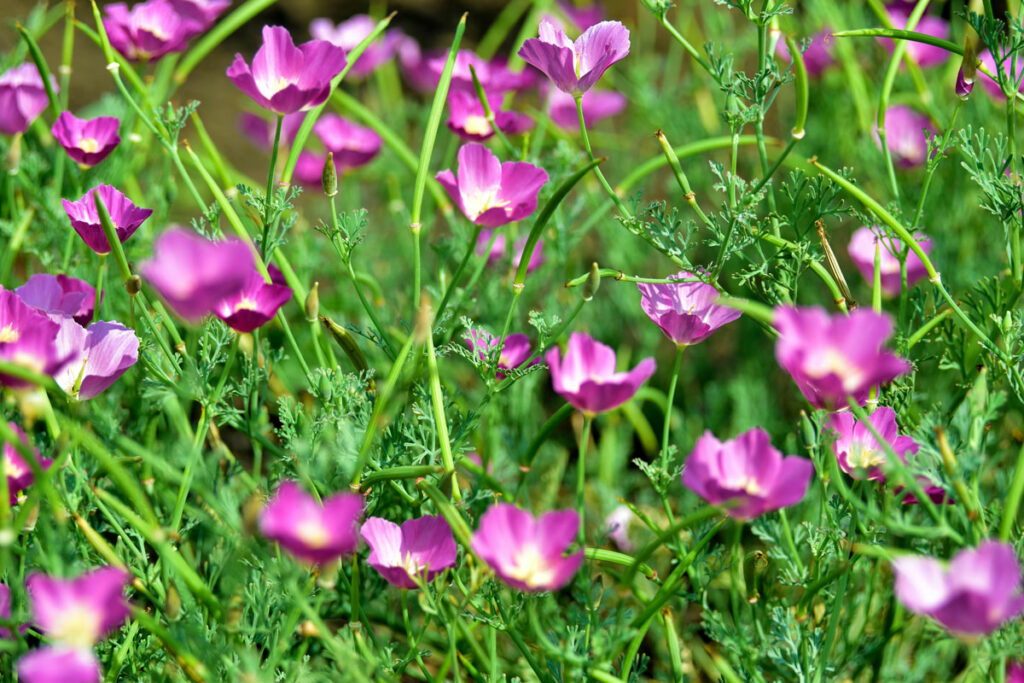
The name for this flower is perfectly fitting, as the long stem and its petals’ shape and color resemble a glass of red wine.
Fun fact: If you dig up the roots of the winecup, you can actually cook the tubers, which reportedly taste like sweet potatoes.
PINK EVENING PRIMROSE
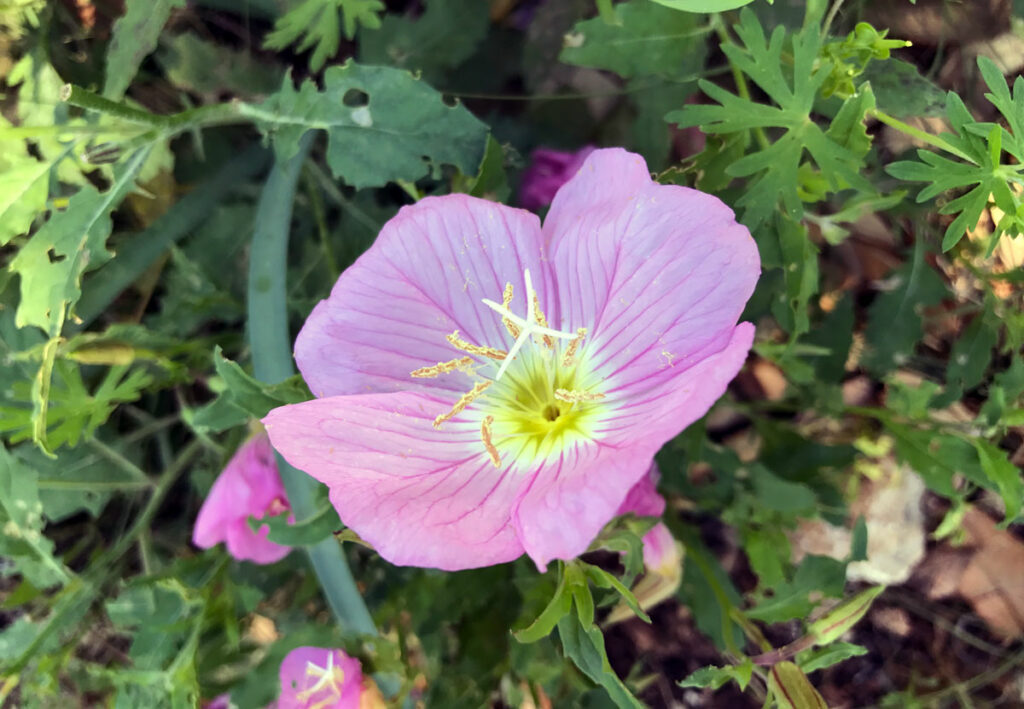
Also known as pink ladies, these wildflowers are common in the Hill Country. They are headstrong and drought-resistant, so the pink evening primrose will outlast many of the other spring wildflowers.
Fun fact: These flowers open their petals in the evening and close them in the morning to hold onto moisture.
CEDAR SAGE

Butterflies and hummingbirds love these tube-shaped flowers, which are filled to the brim with nectar.
Fun fact: These flowers are edible! The crimson petals can be used to give your favorite recipe a warm, sweet flavor.
TEXAS LANTANA
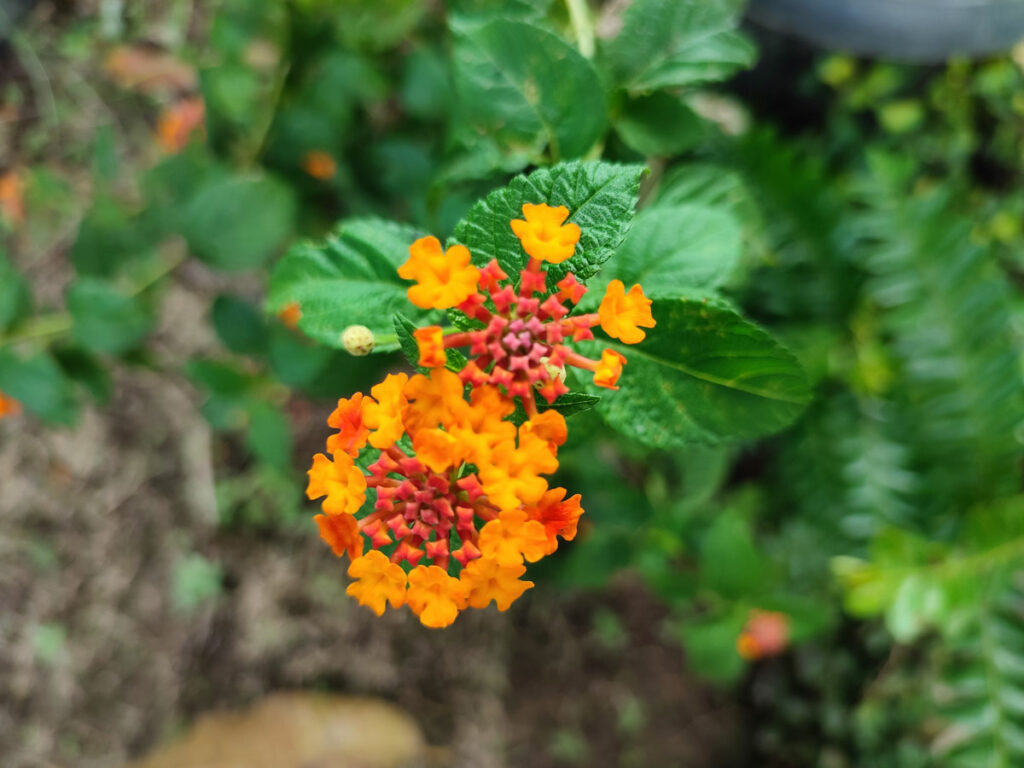
This beautiful shrub is an explosion of red, yellow, and orange. Texas lantana thrives in the blistering summer heat and requires very little water.
Fun fact: Lantana plants attract butterflies and bees and are commonly used as honey plants.
TEXAS YELLOWSTAR
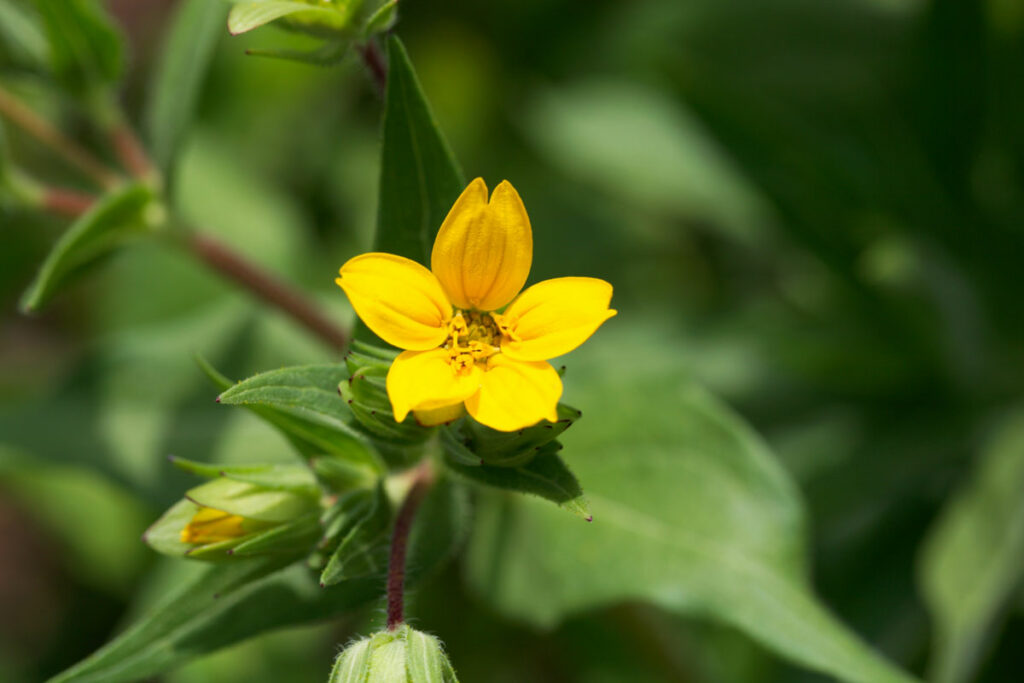
Each flower has three to six petals spread out like rays of sunshine. The Texas yellowstar was discovered and named in New Braunfels and grows extremely well in limestone soil — so it’s very common across the Hill Country.
Fun fact: This bright yellow flower belongs to the sunflower family.
LINDHEIMER’S CLOCKWEED

Lindheimer’s Clockweed, also known as beeblossom, butterfly bush, and Indian feather, typically blooms in the Highland Lakes from March through the first frost, which is often in December. The delicate native blooms, which resemble butterflies or pendulum clocks, can be found in white and pink.
Fun fact: Clockweed flowers open in the early morning. The scent has been compared to that of cat urine.
SAND PHACELIA

Sand phacelia, also called sand scorpionweed and blue phacelia, has a light blue to purple bloom with a white center. It tends to self-sow and spread. Butterflies and bees enjoy these low growers.
Fun fact: If touched, they are said to cause skin irritation similar to poison ivy.
TEXAS GROUNDSEL

Texas groundsel is a tall yellow beauty that blooms in March and April. A main stem reaches 2-3 feet high and sports clusters of small, buttery-yellow flowers. Bees love them.
Fun fact: The leaves of Texas groundsel start off with fine, sticky hairs. Once mature, the leaves are smooth.
PRICKLY POPPY

Prickly poppy, or bluestem prickly poppy, blooms from April through October. The delicate white petals and sunny yellow center are lovely, but the flower cannot be picked without a prick. It’s best to leave this one for the butterflies and bees.
Fun fact: The stem and leaves of the prickly poppy are covered with prickly parts, hence the name. Protect your hands should you wish to pick this bloom.
TEXAS TOADFLAX

Texas toadflax has no other names to remember. The lovely, double-lipped violet to pale blue blooms sit atop a tall, thin stalk. Look for them from February through June.
Fun fact: Toadflax is drought tolerant and makes a dainty addition to any garden.
PEARL MILKVINE

Pearl milkvine is also called netted milkvine and green milkvine. The tiny green-white blooms line the vine. Look close to see the pearl-like center. They are quite spectacular when viewed up close.
Fun fact: Pearl milkvine is in the milkweed family, which is a vital host to monarch butterflies.
ANEMONE

Anemone, better known as thimbleweed and tenpetal thimbleweed, blooms from February through April. It can be found with white, pink, or purple blooms. The center resembles a thimble, hence the name.
Fun fact: Anemone is often called tenpetal, even though it has more than 10 petals.
CROW POISON

Crow poison, also called false garlic, is a tiny member of the lily family. One of the first flowers to appear each year, it shows up in the early spring and can be found up to the first frost.
Fun fact: This simple white flower resembles a wild onion but has no onion smell.
GOLDEN CORYDALIS

Golden corydalis is commonly called scrambled eggs—can you guess why? The lazy yellow clumps look a bit like a favorite breakfast food. It is known to bloom from February through September.
Fun fact: It is a spreading member of the poppy family and a favorite of sheep, although it is toxic to other livestock.
YARROW

Yarrow is also known as milfoil. It sports clusters of tiny white to pale pink flowers atop tall, fern-like stems. These lookers can be found from April through September.
Fun fact: Native Americans made a tea by steeping yarrow leaf foliage as a cure for stomach disorders.
FALSE DAYFLOWER

False dayflower is also called widow’s tears. This spring bloomer has two lavender-blue petals, a tiny white petal below, and a sweet little yellow “face.”
Fun fact: The nickname widow’s tears comes from the “tear” emitted when the bracts below the flower are squeezed.
TEXAS BULL NETTLE

Texas bull nettle is lovely when in bloom, but this Texas native “bites.” Stems of the plant are covered with stinging hairs. Should skin come into contact with the plant or its milky liquid, an uncomfortable irritation will last for about 45 minutes. Texas bull nettle blooms from March through July.
Fun fact: Jewelweed typically grows near Texas bull nettle. Applying a leaf from jewelweed can help ease discomfort from the nettle’s sting.
WESTERN TANSYMUSTARD

Western tansymustard is a long, tall yellow bloomer. The thin stem reaches about 2 feet in height and sports white-yellow blooms most of the way down. Find them in the early spring through early summer.
Fun fact: The leaves and seeds of the plant, which is in the mustard family, are edible. The seeds, said to be spicy, can be used as seasoning. A poultice of the entire plant is said to ease a toothache.
PIGEONBERRY

Pigeonberry, also called rouge plant and bloodberry, is a year-round bloomer that grows beneath trees, cactus, and bushes. It is not uncommon to see the tiny pale pink-white flowers and red berries on one plant at the same time.
Fun fact: The red berries were once used for cosmetics.
WHITE CEMETERY IRIS
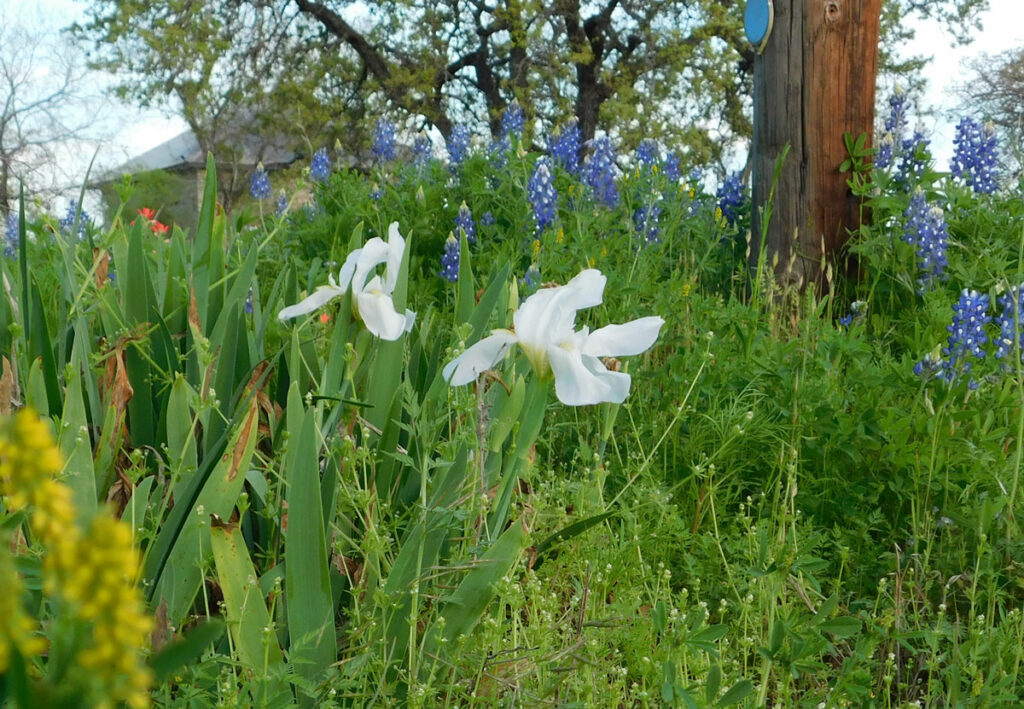
The white cemetery iris, while not a native Texan, can be found blooming in fields and roadsides typically beginning in April.
Fun fact: This pretty white heirloom iris originated in North Africa, where it was used as a gravesite decoration.
TEXAS VERBENA
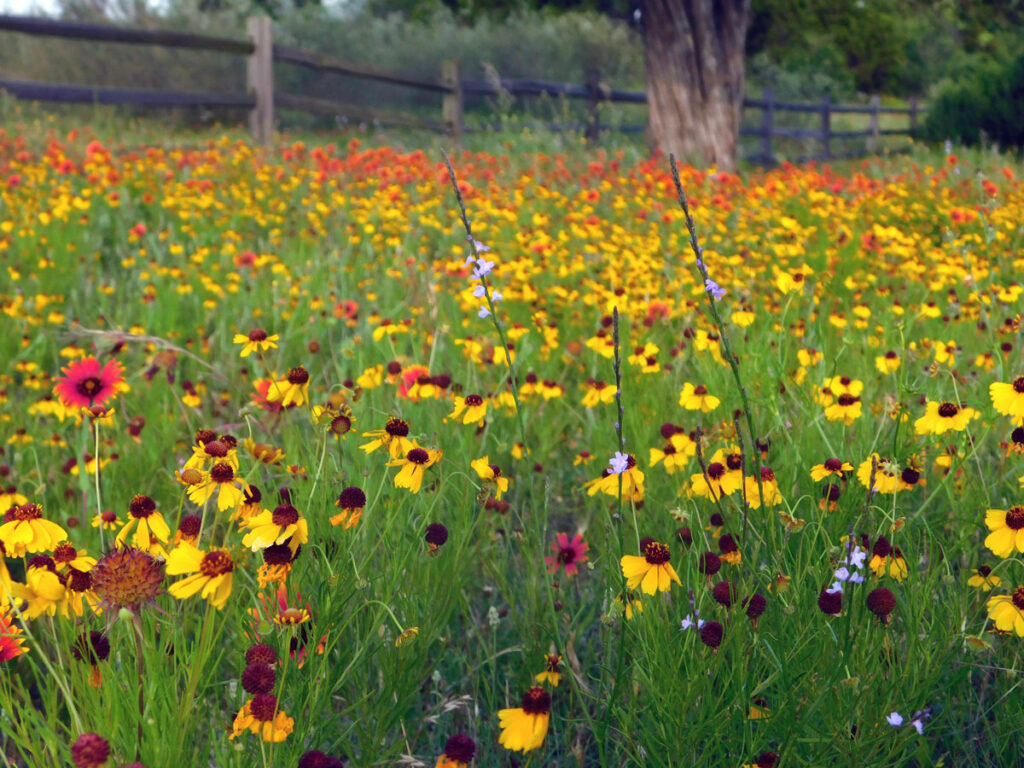
Texas verbena, also known as Texas vervain and slender vervain, are tall, grass-like stems most noticeable from March through June, when the tiny blue-purple blooms arrive.
Fun fact: Butterflies and bees enjoy these miniature blooms.
COMMON SUNFLOWER
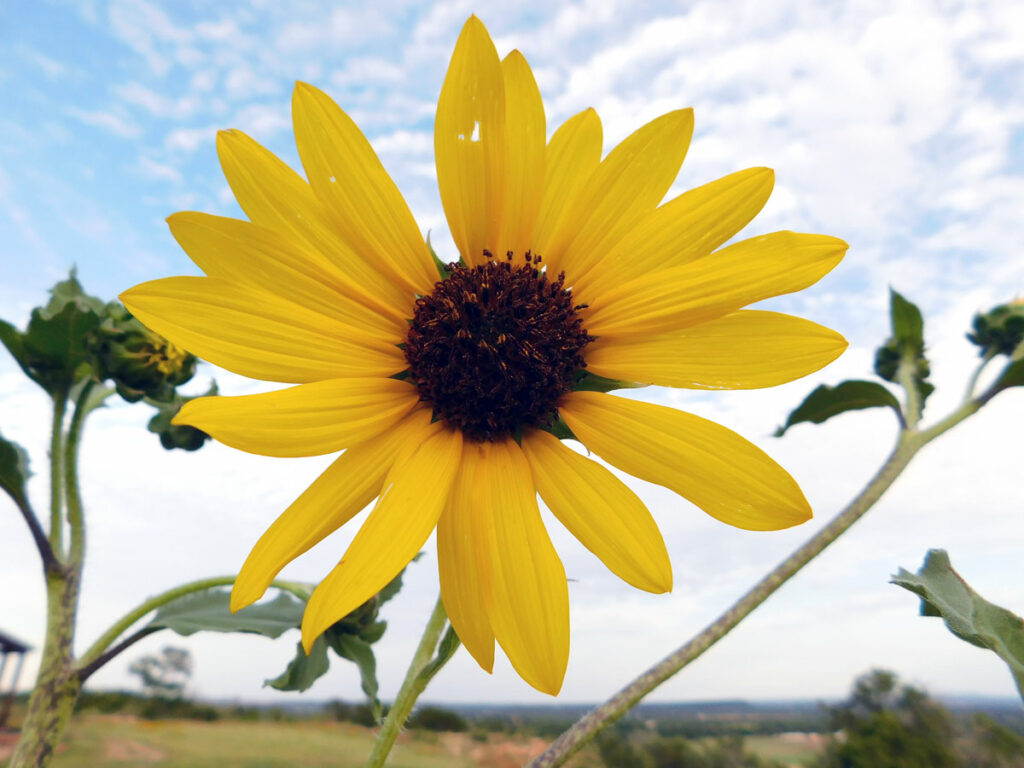
This hardy flower is a staple in the Hill Country with giant blooms from July through October. It attracts birds and bees.
Fun fact: Native Americans used various parts of the flower medicinally for pulmonary problems, burns, and malaria.
LINDHEIMER’S MORNING GLORY
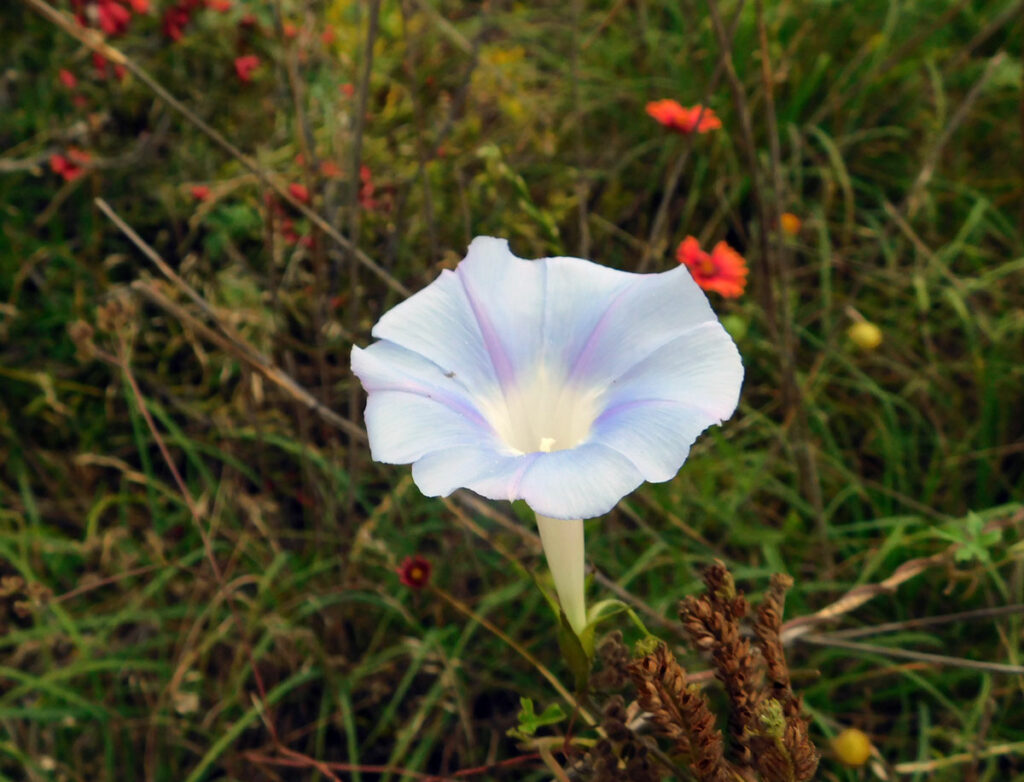
Also called blue morning glory, the Lindheimer’s morning glory has sky-blue blooms with white centers. They can be seen in the morning from April through October.
Fun fact: This variety was named after Ferdinand Jacob Lindheimer, the “Father of Texas Botany,” who was the first-known Texan to collect plant specimens.
STIFF GREENTHREAD
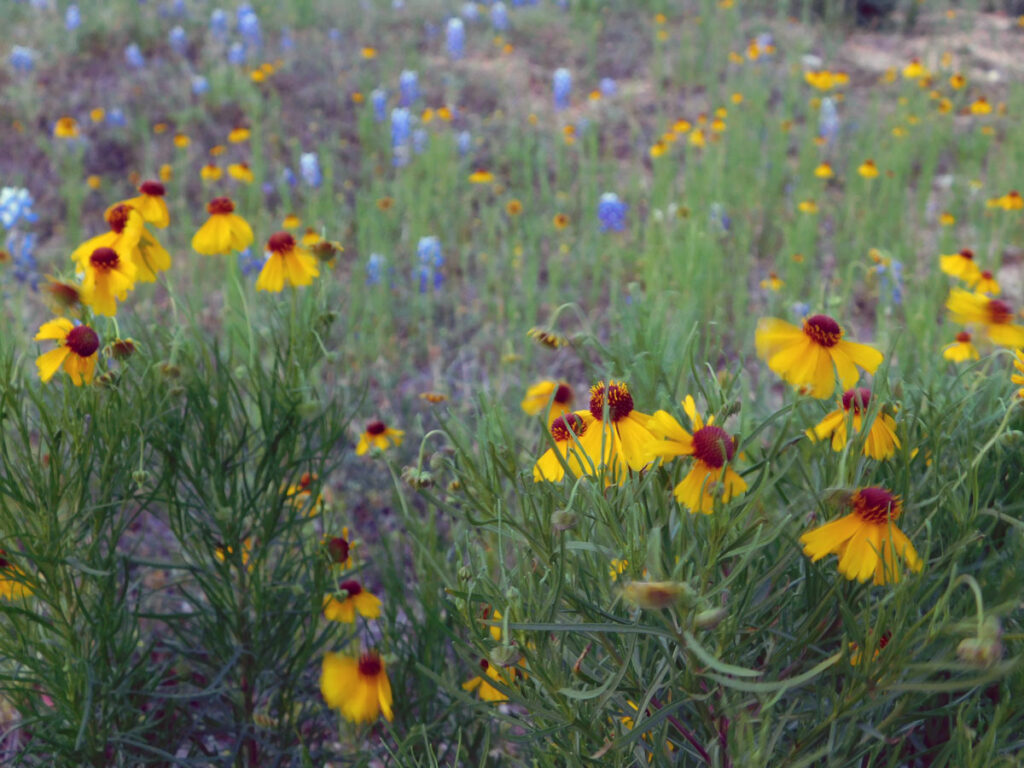
Stiff greenthread is a member of the aster family. It has bare, thread-like stems and foliage with yellow blooms and reddish-maroon centers. It blooms from February through December and is a nectar producer.
Fun fact: The foliage of the plant resembles stiff green thread, hence the name.
SILVERLEAF NIGHTSHADE
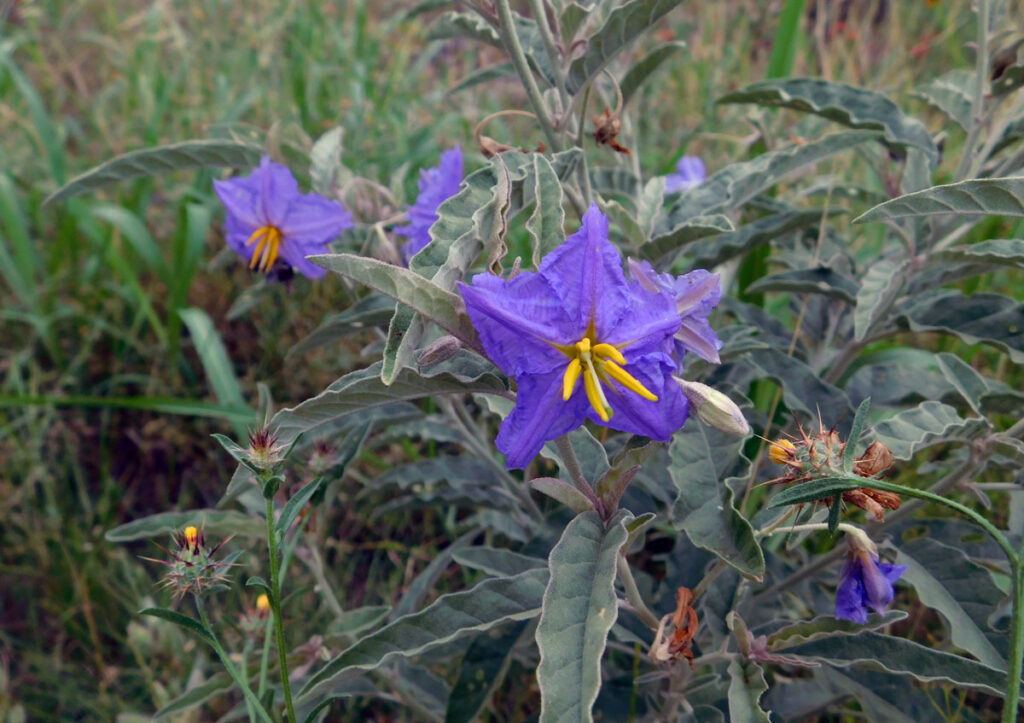
Also known as white horse nettle, this lavender flower blooms from April through October. All parts of the plant are toxic to people and animals, but it is a source of nectar for bees and butterflies.
Fun fact: Silverleaf nightshade was used medicinally in various forms by Native Americans to treat sore throats, toothaches, rattlesnake bites, and poison ivy rashes.
CALLIOPSIS

Calliopsis is also known as golden wave, coreopsis, or golden tickseed. Some of these sunny yellow-gold, scalloped flowers have maroon centers, while others do not. It blooms from April through June. Birds, butterflies, and bees are wild for this flower.
Fun fact: Flower parts were used as a source of yellow and red dyes.
PURPLE HORSEMINT
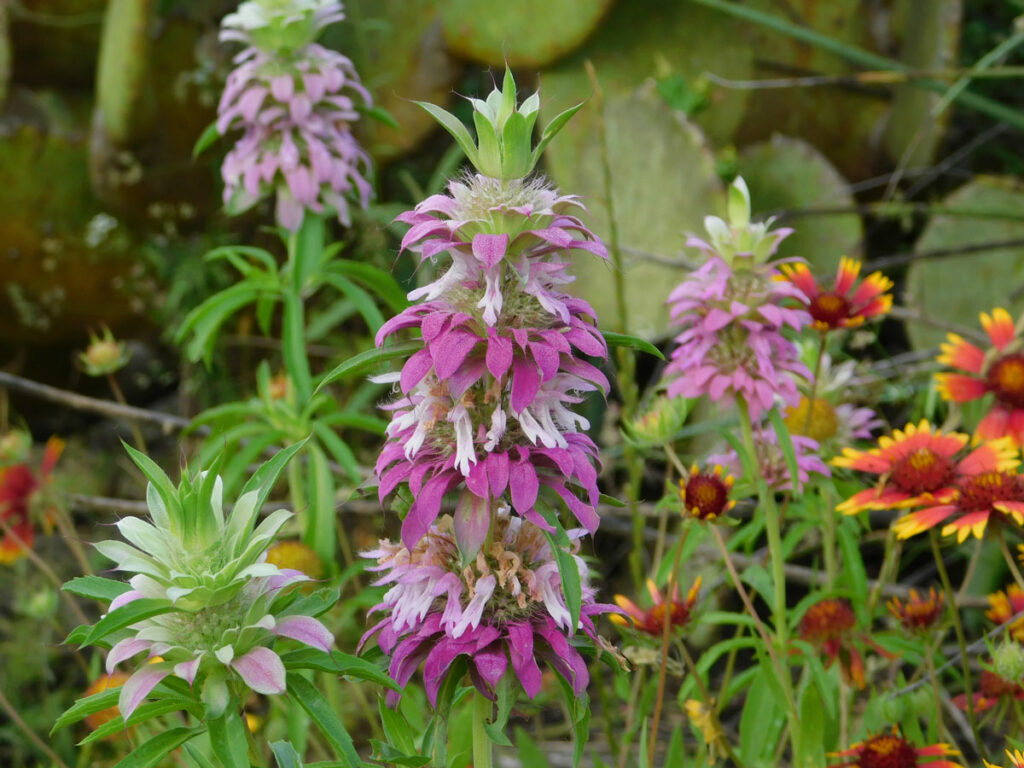
Also known as lemon beebalm, this extravagant bloom is usually seen from May through July but will bloom into October during an unusually wet season. Horsemint attracts bees, butterflies, and hummingbirds.
Fun fact: When crushed, the leaves of this plant are thought to smell like lemon.
CORAL HONEYSUCKLE
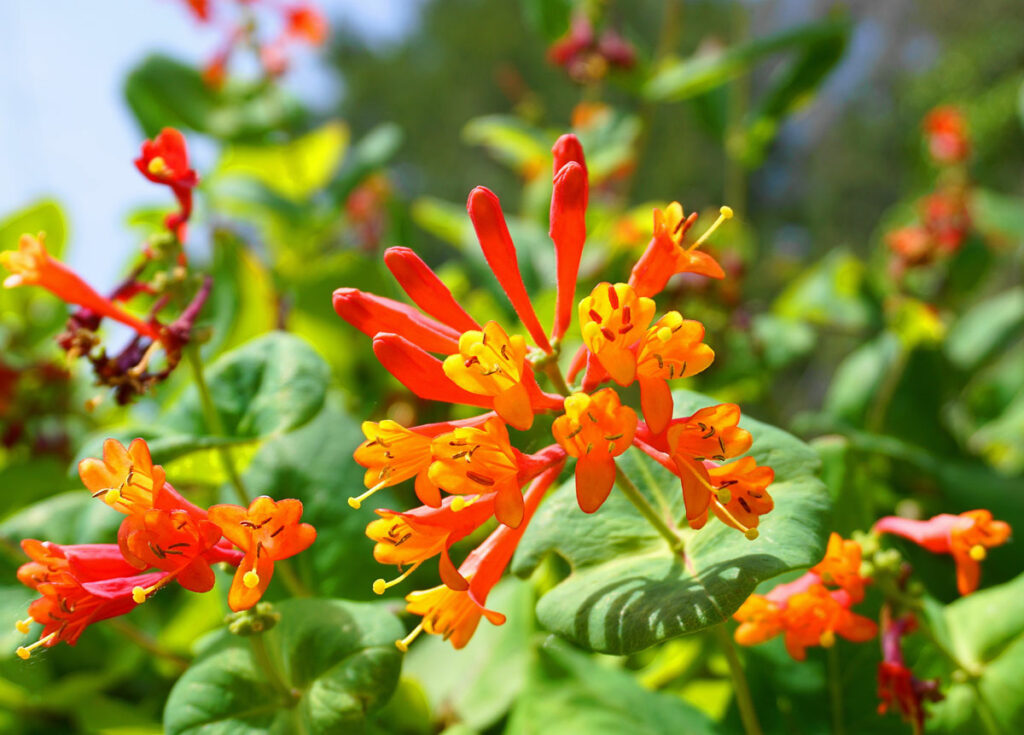
Hummingbirds love the drop-down clusters of flowers that hang from vines of coral honeysuckle. It blooms in red and yellow through June and is easy to grow. It’s also easy to find at nurseries and adds a bright splash of color to any garden.
Fun fact: A chewed leaf applied to a bee sting helps ease the sting.
EVENING RAIN LILY

Also known as evening star rain lily, these delicate, single, white flowers can be found from May through September.
Fun fact: They almost always show up a day or so after a rain, hence the name.
BLUE CURLS
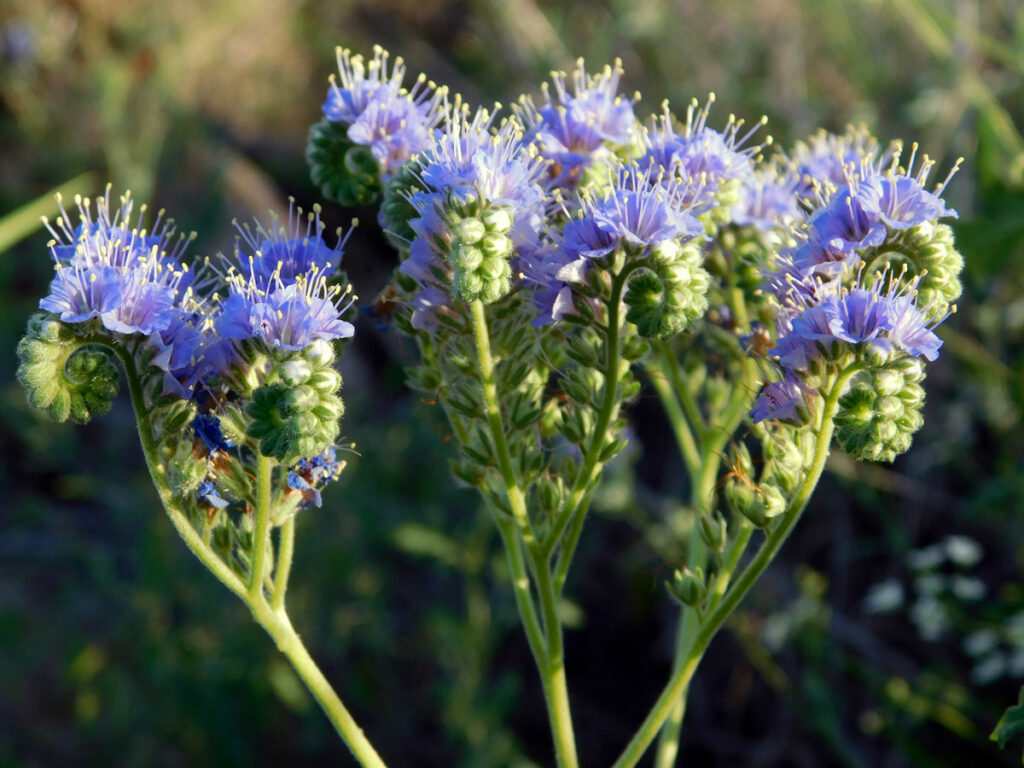
The lovely, lavender-blue, bell-shaped flowers of blue curls, also called fiddleneck and caterpillar, are very attractive to bees and butterflies. It is often found beneath the shade of a live oak or a pecan tree and is common across the Hill Country from March through May.
Fun fact: As the tiny blooms open the curls uncurl.
BLACK-EYED SUSAN
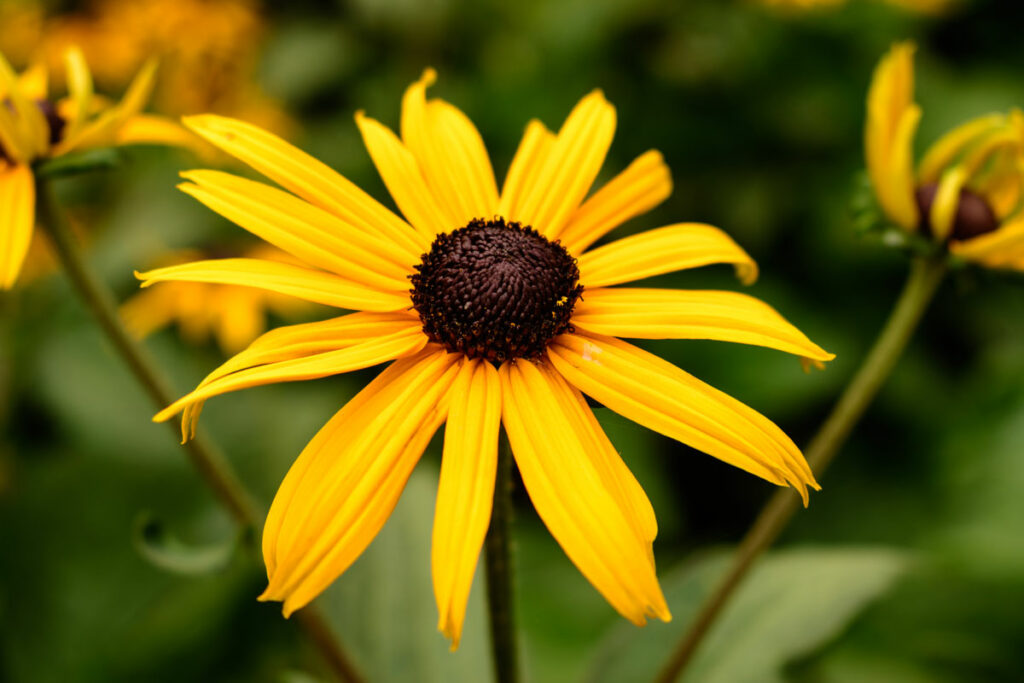
Black-eyed Susan, also called sweet black-eyed Susan and sweet coneflower, is a late-blooming treat with its distinct, spindly yellow petals This wildflower wonder draws the eye—and pollinating insects—to its brown or black center. It can be found in bloom from July through November.
Fun fact: Native Americans used juice from the root to treat earaches.
TEXAS SKELETON PLANT
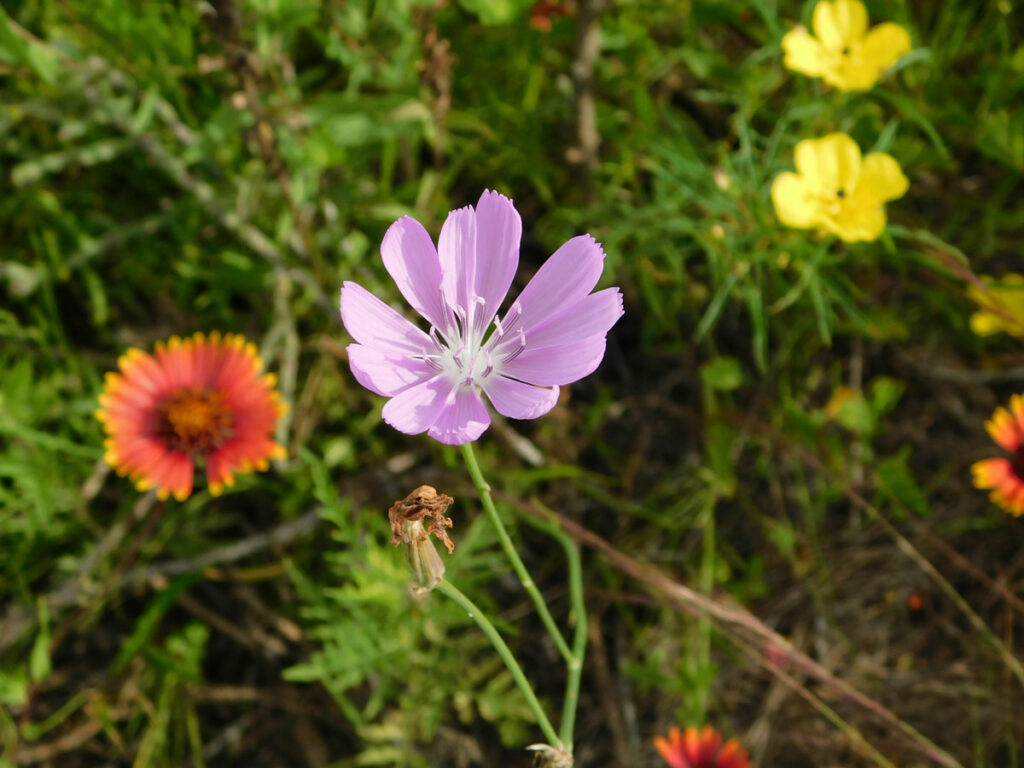
Texas skeleton plant has a pretty, light pink-purple (sometimes white) bloom. It can be seen from April through August and often attracts butterflies.
Fun fact: The rather grave name was given because, with few noticeable leaves, it appears as a bare “bony” stem
TEXAS THISTLE
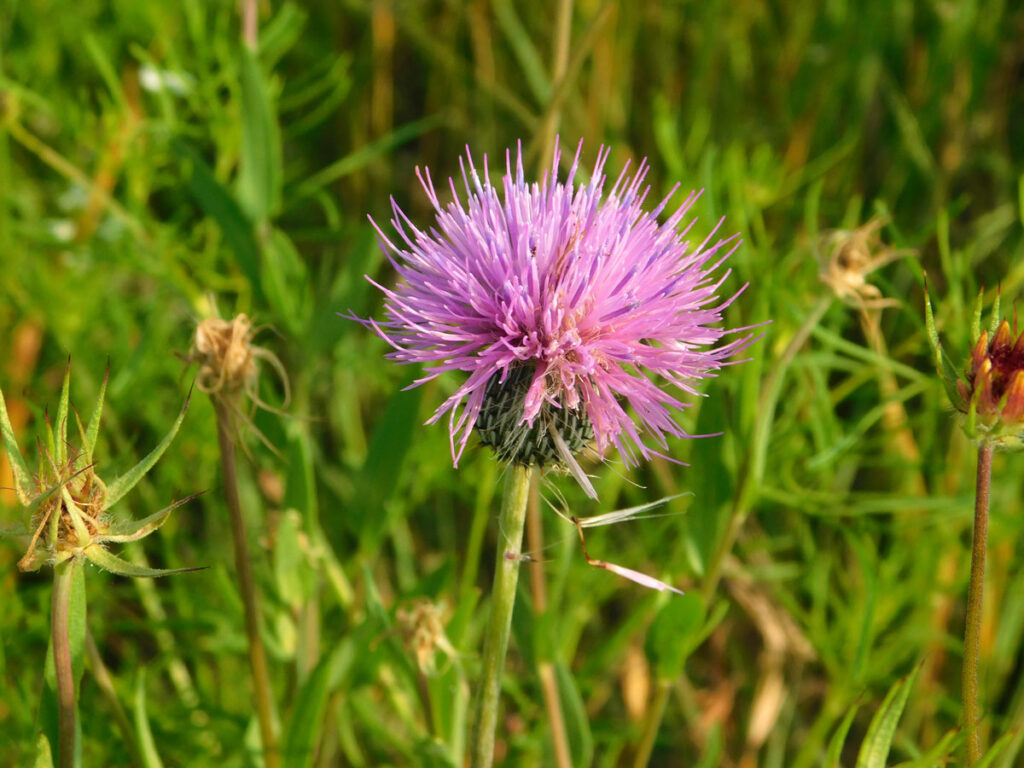
Texas thistle is a drought-tolerant native that blooms from April through August. Its fuzzy lavender puffs attract bees, butterflies, and birds—particularly goldfinches, which eat the seeds and use the fluff of ripened seeds to line their nests.
Fun fact: Texas thistle is also a larval host for painted lady butterflies.
MEXICAN HAT

Mexican hats, also known as prairie coneflower and thimbleflower, typically bloom from May through July. The tall center cone is surrounded by yellow and red-brown petals.
Fun fact: The petals can vary in color combinations of yellow and red-brown. Some have solid yellow or red-brown petals, others are mostly yellow or mostly red-brown.
ORANGE FLAMETHROWER

Orange flameflowers, also commonly known as talinum, bloom from May through September. Flameflowers are well-suited for dry climates. The leaves of the plant are slender and slightly fleshy.
Fun fact: Flameflowers open in the morning and wither by late afternoon. Look for them early in the day.
ERYNGO

Eryngo, also known as Leavenworth’s eryngo and false purple thistle, looks like purple pineapples on a stick. Find this prickly, purple bloom from July to October. It’s no surprise the plant is deer-resistant.
Fun fact: Eryngo keeps its brilliant purple hue long after it is cut.
SPANISH DAGGER YUCCA
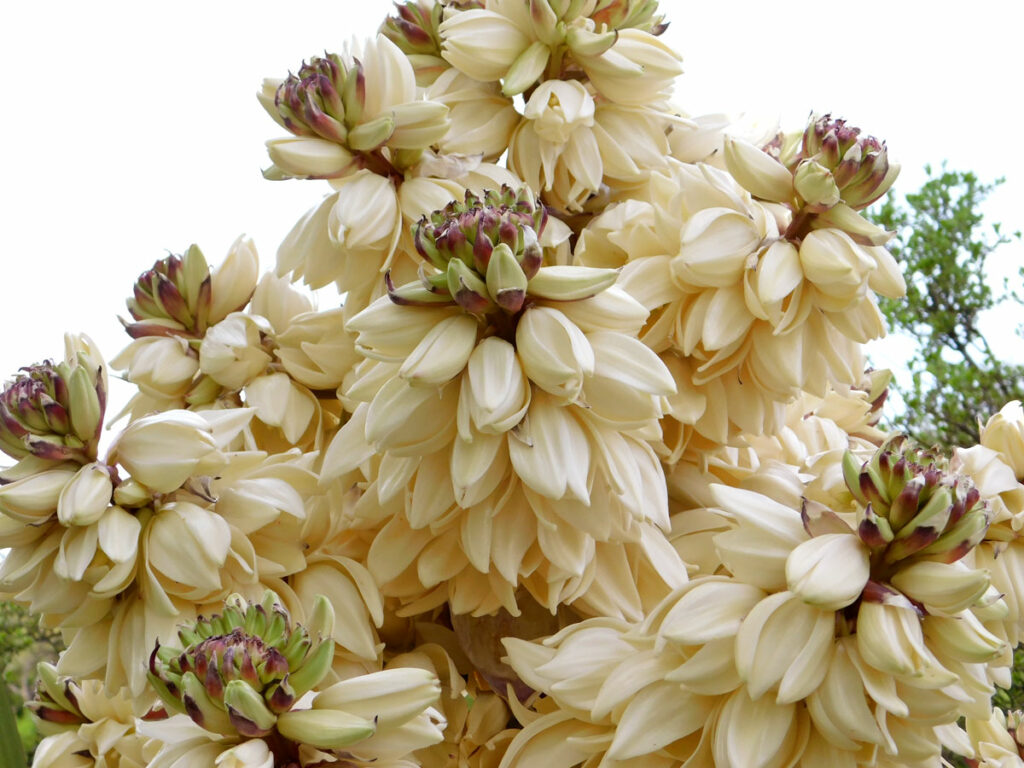
Spanish dagger yucca, also called Spanish Bayonet and Don Quixote’s Lance, blooms from January through April and sometimes in December in the Hill Country. The great, creamy-white blooms are attractive to butterflies. In fact, the plant is a larval host for yucca giant skipper butterflies.
Fun fact: The leaves of this yucca grow up to 3 feet long and have an extremely sharp tip capable of puncturing flesh.



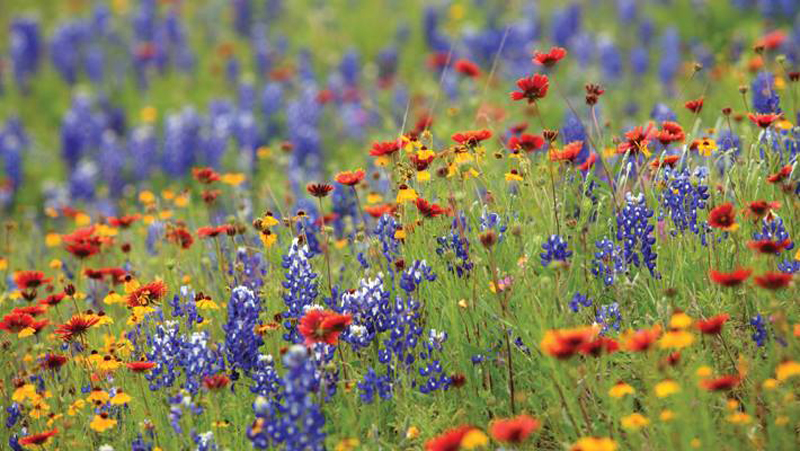





l wanted to thank you very much for this article on wildflowers. l drove the Hill country in 2024 taking pictures of Wildflowers . l have several hundred pics that in most cases have a trail or other item that accentuates the beautiful flowers.
From north of Kingsland to Muleshoe Bend patk. To
Enchanted Rock
Great information, beautiful pictures!
Great information! I will look at the flowers with enlightenment & enjoy knowing the fun facts.
A great aide memoir as Spring approaches and we can be out walking along the glorious Texas wild flowers. Thank you.